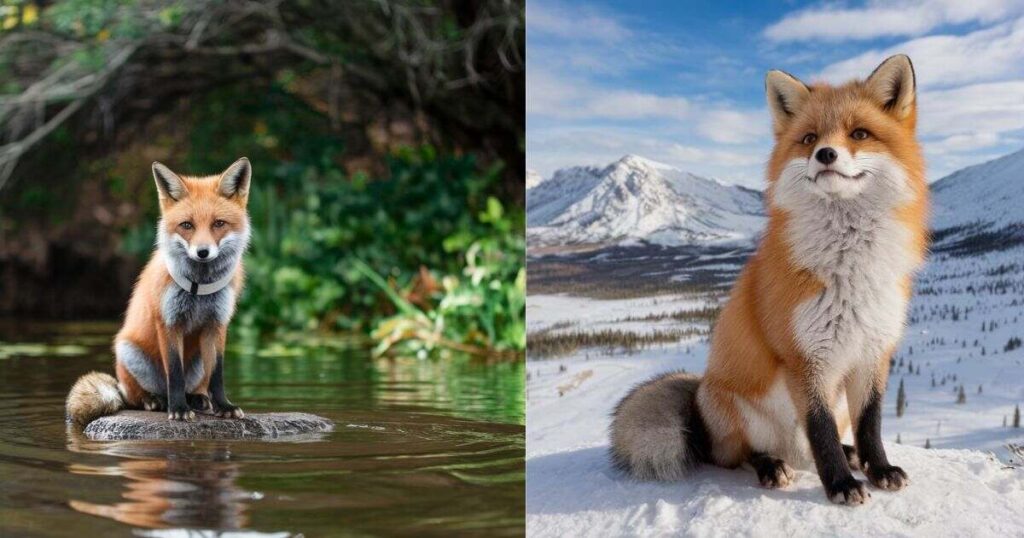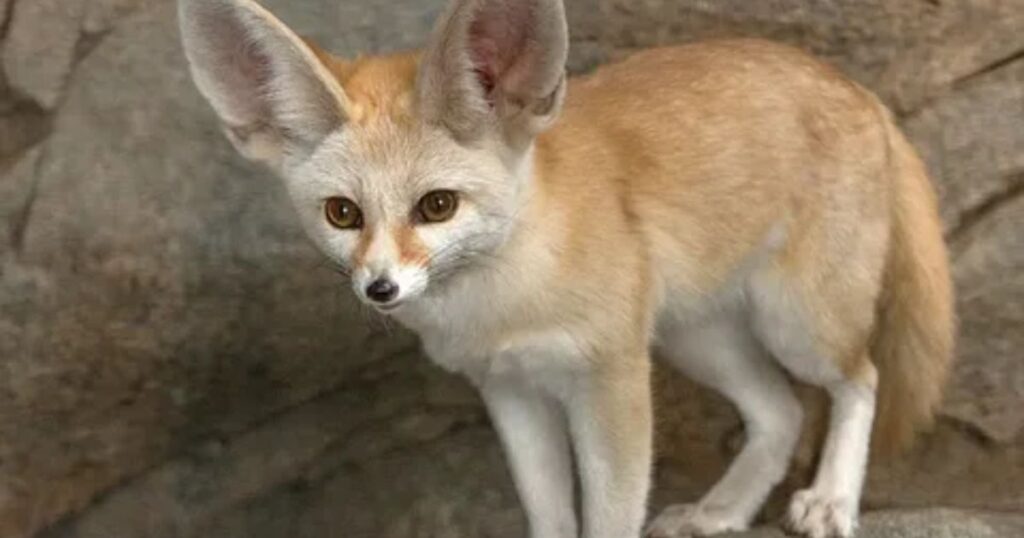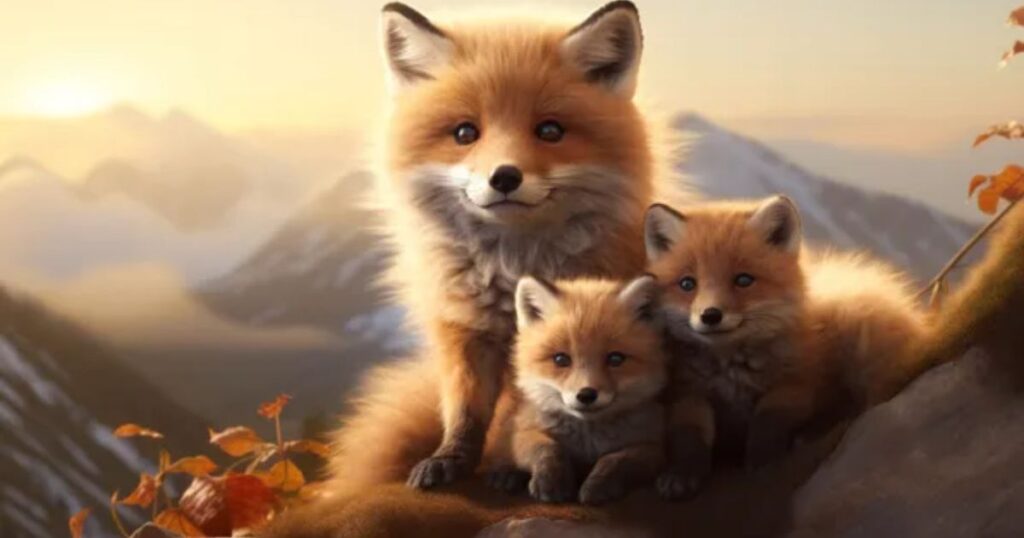Cute:Vckxjxf4zh0= Fox, a charming mammal that’s been captivating nature lovers across the USA. This furry friend isn’t your average fox – it’s a unique species that’s full of surprises.
The Cute:Vckxjxf4zh0= Fox stands out with its playful antics and unusual features. From its distinctive coat to its clever behaviors, this playful animal has a lot to offer.
Get ready to move into the world of this fascinating creature and discover why it’s become a favorite among wildlife enthusiasts.
What Makes the Cute:Vckxjxf4zh0= Fox So Special?
The Cute:Vckxjxf4zh0= Fox is truly one-of-a-kind. Its fur comes in a rainbow of colors, from fiery reds to cool silvers. But it’s not just about looks, this clever canine has some impressive tricks up its sleeve. It can squeeze into tight spaces and climb trees with ease, making it a master of adaptability.
What really sets this fox apart is its personality. Cute:Vckxjxf4zh0= Foxes are known for their curiosity and playfulness. They’re not shy about investigating new things, whether it’s a strange object or a potential friend. This bold nature has helped them thrive in all sorts of environments, from dense forests to urban parks.
Recommended Blog: noob:u92gjhlwyzg= roblox Journey From Beginner to Expert
The Cute:Vckxjxf4zh0= Fox’s Extraordinary Senses
When it comes to senses, the Cute:Vckxjxf4zh0= Fox is like a superhero. Its ears can pick up the tiniest sounds, even the scurrying of a mouse underground. Its nose is so powerful, it can smell food from miles away.
Fun Facts About the Cute:Vckxjxf4zh0= Fox
Get ready for some surprising details about our furry friend. Did you know that Cute:Vckxjxf4zh0= Foxes can run up to 30 miles per hour? That’s faster than the average dog. They’re also expert jumpers, able to leap over fences with ease.
Here’s some more fascinating trivia:
- Cute:Vckxjxf4zh0= Foxes have a special ‘laugh’ that sounds like a chuckle.
- They can remember the location of up to 1,000 food caches.
- These foxes are excellent swimmers and love to play in water.
- They use Earth’s magnetic field to help them hunt.
| Skill | Description |
| Speed | Up to 30 mph |
| Jumping | Can clear 6-foot fences |
| Memory | Remembers 1,000+ food locations |
| Swimming | Enjoys water play |
Where Do Cute:Vckxjxf4zh0= Foxes Live?

The Cute:Vckxjxf4zh0= Fox is a master of adaptation, making its home in various natural surroundings. You might spot one in the dense forests of the Pacific Northwest, the rolling grasslands of the Midwest, or even the chilly tundra of Alaska.
These versatile creatures have spread across the USA, each population adapting to its local environment. But here’s where it gets interesting:Vckxjxf4zh0= Foxes have also made themselves at home in urban areas.
They’ve been spotted in city parks, suburban backyards, and even on college campuses. This ability to thrive in both wild home settings and human-populated areas showcases their remarkable adaptability.
The Cute:Vckxjxf4zh0= Fox’s Cozy Den
Home sweet home for a Cute:Vckxjxf4zh0= Fox is its den. These crafty creatures dig out elaborate underground homes, complete with multiple rooms and escape routes. A typical den might have 2-4 entrances, giving the fox plenty of options for quick getaways.
What Do Cute:Vckxjxf4zh0= Foxes Eat?
When it comes to diet preferences, Cute:Vckxjxf4zh0= Foxes are true food adventurers. They’re omnivores, which means they enjoy both meat and plants. Their menu changes with the seasons, adapting to whatever food sources are available.
In spring and summer, these foxes feast on:
- Small mammals like mice and rabbits
- Birds and their eggs
- Insects and earthworms
- Fruits like berries and apples
Come fall and winter, they switch to:
- Nuts and seeds
- Leftover fruits
- Whatever small prey they can catch
How Do Cute:Vckxjxf4zh0= Foxes Communicate?
Communication is key in the world of Cute:Vckxjxf4zh0= Foxes, and they’ve got quite the repertoire of animal signals. Their vocalizations range from high-pitched yips to low growls, each with its own meaning.
A sharp bark might warn of danger, while a softer whimper could be a greeting to a family member. But it’s not all about sound. These foxes are masters of body language. A wagging tail shows excitement, while flattened ears signal fear or submission.
They also use scent marking to communicate, leaving their unique smell on trees or rocks to mark territory or attract a mate. All these methods come together in their social interactions, creating a complex language that helps them navigate their world.
Read Also This Blog: Cool:urriytflh98= Cars The Future of Automotive Innovation
The Life Cycle of a Cute:Vckxjxf4zh0= Fox
The growth stages of a Cute:Vckxjxf4zh0= Fox are a marvel to behold. It all starts in late winter when breeding pairs form. After a gestation period of about 52 days, a litter of 4-6 kits is born in spring.
These tiny pups are born blind and helpless, relying entirely on their mother for the first few weeks of life. As they grow, the kits go through a rapid development process. Their eyes open after about two weeks, and they start exploring outside the den at around four weeks old. By summer, they’re learning to hunt alongside their parents.
The maturation timeline continues into fall when the young foxes, now almost full-grown, start to leave their family group to find territories of their own. This lifespan progression typically lasts about 3-4 years in the wild, though some Cute:Vckxjxf4zh0= Foxes have been known to live up to 10 years in captivity.
How to Spot a Cute Vckxjxf4zh0= Fox in the Wild

Spotting a Cute:Vckxjxf4zh0= Fox can be a thrilling experience. The best times for fox watching are dawn and dusk when these creatures are most active. Look for them in areas where forest meets open land – they love these edge habitats.
Here are some tips for successful fox sighting:
- Look for signs like tracks or scat
- Listen for their distinctive calls
- Move quietly and use binoculars
- Respect their space don’t try to get too close
The Role of Cute:Vckxjxf4zh0= Foxes in Nature
Cute:Vckxjxf4zh0= Foxes play a crucial role in maintaining nature balance. As both predators and prey, they help keep ecosystems in check. They control populations of small mammals and insects, preventing overgrazing and crop damage.
At the same time, they serve as food for larger predators like wolves and eagles. These foxes also contribute to biodiversity in unexpected ways. As they move about, they spread seeds in their droppings, helping plants colonize new areas.
Their abandoned dens provide homes for other animals like rabbits and badgers. In this way, the Cute:Vckxjxf4zh0= Fox’s ecological function extends far beyond its cute appearance, making it a key player in the intricate web of wildlife interactions.
Myths and Legends About Cute:Vckxjxf4zh0= Foxes
Cute:Vckxjxf4zh0= Foxes have long captured human imagination, featuring in numerous folklore tales and cultural stories. In Native American traditions, foxes often appear as clever tricksters, outsmarting other animals and even humans. European fairy tales, like “The Fox and the Grapes,” use foxes to teach moral lessons.
These ancient narratives have shaped our perception of foxes as cunning and intelligent creatures. While some traditional beliefs paint them as mischievous or even dangerous, modern understanding has dispelled many myths. Today, we appreciate Cute:Vckxjxf4zh0= Foxes for their true nature, intelligence, adaptability, and important members of our ecosystems.
How to Help Protect Cute:Vckxjxf4zh0= Foxes
Ensuring the species survival of Cute:Vckxjxf4zh0= Foxes is crucial for maintaining healthy ecosystems. There are several protection measures we can take to help these charming creatures thrive:
- Support habitat conservation efforts in your area
- Avoid using pesticides that can harm foxes and their prey
- Drive carefully in areas where foxes are known to live
- If you see a fox, enjoy from a distance – don’t try to pet or feed it
- Educate others about the importance of foxes in our ecosystems
Don’t Miss Out This Blog: Exploring the World of Animated:Wkyidcuim8w= Gif Wallpaper
Cute:Vckxjxf4zh0= Foxes in Pop Culture
The charm of the Cute:Vckxjxf4zh0= Fox hasn’t gone unnoticed in the world of entertainment. These adorable creatures have made quite a splash in various media portrayals. From children’s books to blockbuster movies, foxes often appear as clever, quick-witted characters that capture our hearts.
One famous example is the character Nick Wilde from Disney’s “Zootopia,” whose personality mirrors many traits of the Cute:Vckxjxf4zh0= Fox. In literature, Roald Dahl’s “Fantastic Mr. Fox” showcases the intelligence and resourcefulness we associate with these animals.
Why We Love Cute:Vckxjxf4zh0= Foxes
It’s hard not to fall in love with Cute:Vckxjxf4zh0= Foxes. Their adorable appearance, with those big eyes and fluffy tails, is just the start of their appeal. What really captures our hearts are their lovable traits, their playfulness, their intelligence, and their adaptability.
These foxes embody a perfect blend of wild beauty and relatable behaviors. We admire their clever problem-solving skills and their ability to thrive in various environments.
Their playful nature reminds us of our own pets, creating a connection that bridges the gap between wildlife and our daily lives. In the end, Cute:Vckxjxf4zh0= Foxes represent the wonder and resilience of nature, wrapped up in an irresistibly charming package.
Conclusion
As we wrap up our journey into the world of the Cute:Vckxjxf4zh0= Fox, it’s clear why these adorable creatures have captured our hearts. From their clever adaptations to their playful nature, these foxes embody the wonder and resilience of the natural world.
We’ve explored their unique features, their role in ecosystems, and even their place in our culture. But perhaps the most important takeaway is the need to protect and appreciate these charming mammals. By understanding and respecting Cute:Vckxjxf4zh0= Foxes, we not only ensure their survival but also enrich our own lives. So next time you’re out in nature, keep an eye out – you might just spot one of these fascinating furry friends.

